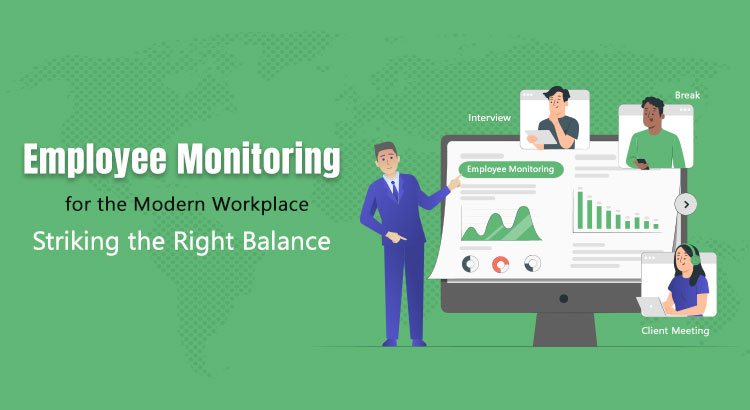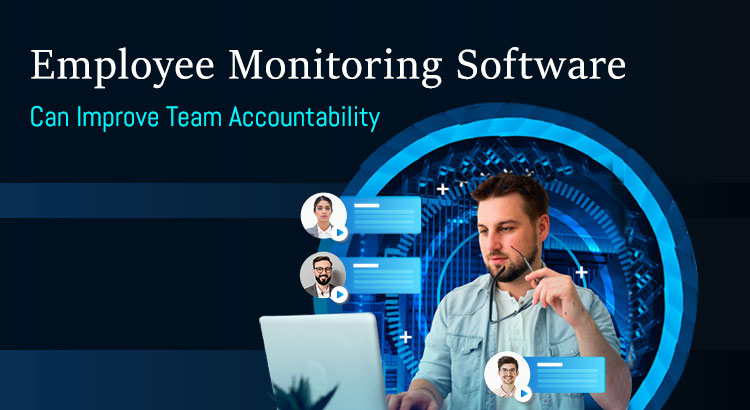Employee Monitoring for the Modern Workplace: Striking the Right Balance
- October 4, 2024

Today, employees leverage flexible hours, remote work options, and a plethora of digital tools to get their jobs done. This shift in workstyle has opened doors to increased productivity, but it’s also introduced a new challenge employee monitoring.
However, employee monitoring can be a double-edged sword. It can be a valuable tool for boosting efficiency, but it can also raise privacy concerns and erode trust. So, how do you strike the right balance? This guide will explore employee monitoring best practices, navigate the ethical considerations, and help you implement a system that fosters both productivity and a positive work environment.
Why Consider Employee Monitoring?
Let’s be honest, even the most dedicated employees can struggle with time management, especially in a world filled with distractions. Employee monitoring can provide valuable insights into how work time is being utilized. Here are some potential benefits:
Improved Time Management: Monitoring can reveal areas where employees might be losing time. This can help identify opportunities for implementing time management apps or techniques to enhance focus and efficiency.
Enhanced Productivity: Knowing their activity can motivate employees to stay on track and minimize unproductive time.
Reduced Security Risks: Monitoring internet usage and file access can help prevent data breaches or misuse of company resources.
Training & Development: Monitoring can highlight areas where employees might need additional training or resources to improve performance.
Employee Privacy in the Workplace: Finding the Middle Ground
While employee monitoring offers undeniable benefits, it’s crucial to respect employee privacy. Here’s how to find the middle ground:
Transparency is Key: Be upfront and transparent about your monitoring practices. Clearly define what data is being collected, how it will be used, and who has access to it.
Focus on Business Needs: Don’t monitor everything. Tailor monitoring to address specific business needs, like tracking project progress or ensuring data security.
Set Clear Guidelines: Establish clear guidelines about acceptable internet and computer use during work hours.
Open Communication: Encourage open communication with your employees about their concerns regarding monitoring.
Ethical Implementation: Building Trust Through Monitoring
Remember, the goal of employee monitoring is not to create a Big Brother atmosphere, but to foster a culture of trust and accountability. Here are some tips for ethical implementation:
Focus on Outcomes: Monitor the results (reports, project completion) instead of just activity levels (keystrokes, mouse clicks).
Provide Support: Use monitoring data to identify areas where employees need help, not just to punish them. Offer training or resources to address any performance gaps.
Respect Breaks and Personal Time: Employees deserve breaks. Don’t monitor activity during designated break times or after work hours.
Regular Reviews: Periodically review your monitoring practices and update them based on employee feedback and changing company needs.
Employee Monitoring Best Practices: Putting it All Together
Now that we’ve explored the pros and cons, let’s get practical. Here are some employee monitoring best practices to ensure you’re on the right track:
Choose the Right Tools: Select monitoring software that aligns with your specific needs and offers features like data encryption and access controls.
Develop a Monitoring Policy: Document your monitoring practices, including what data is collected, storage duration, and access procedures. Share this policy with all employees.
Train Managers: Train managers on the ethical use of monitoring data and how to address potential employee concerns.
Focus on Positive Reinforcement: Acknowledge and reward employees who consistently demonstrate responsible use of company resources.
Employee monitoring is a powerful tool, but it should be used strategically and ethically. By focusing on collaboration, transparency, and open communication, you can leverage monitoring to enhance productivity, identify areas for improvement, and ultimately build a thriving work environment where everyone feels valued and respected.
More resources
- Time Management Showdown: Time Tracking Apps Vs. Traditional Timesheets
- Beyond The Big Brother Myth: Unveiling The Unexpected Benefits Of Employee Monitoring



